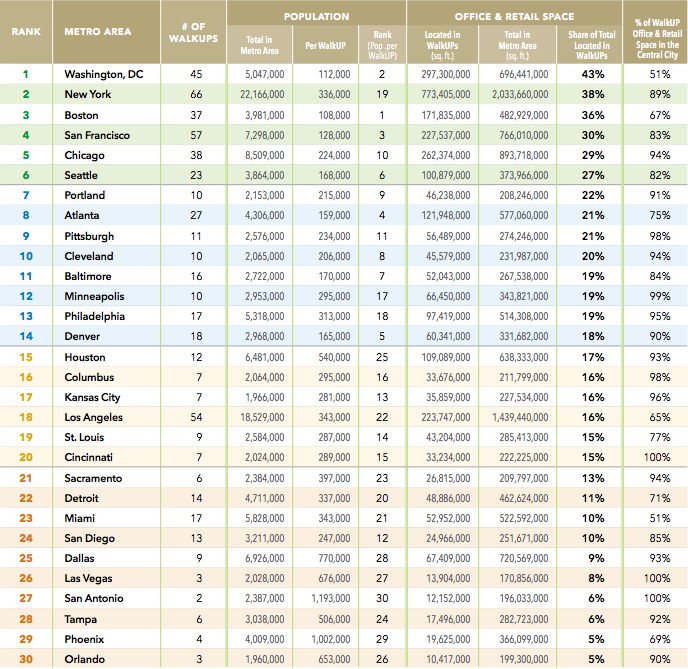The lists:


 Source
Source
 Source
Source
Very apples to oranges study and confused definitions of what is a "WalkUp".
Take note of the study's population numbers. They are more confused than ever. I get using only MSA numbers or only CSA numbers when available. I get using Boston MSA and SF CSA. I get using only urbanized areas. I don't know where any of these population numbers come from...
The rankings seem to be based heavily on population, which is the source of the denominator, per se. That said, Boston's population isn't even using its urbanized area, let alone MSA or CSA, same with Atlanta, same with Chicago, same with a few others. DC is using more than urbanized area, but less than MSA.
LA is using more than its CSA, somehow. NYC is somewhere between MSA and CSA, same with SF, same with Pittsburgh, same with Denver, and a few others.
Basically, can't take this study seriously. Lol
They also place equal weights on all WalkUps, when we all know a WalkUp is subjective. A WalkUp in LA, SF, or NYC is going to be far far far far superior to a WalkUp in Atlanta, Cleveland, Houston, etc. Yet sheer # of WalkUps by their definition is what is used. Not the fact that a WalkUp in LA might be huge/dense and surrounded by high density residential, and a WalkUp in suburban Atlanta at best is the town of Roswell, which you need to drive to really and is surrounded by hills and very low density single family residential.



